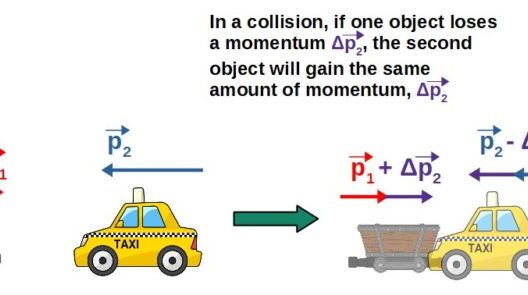Kinetic energy, the energy possessed by an object in motion, is a cornerstone of classical mechanics. Like the steady pulse of a heartbeat, it serves as a reminder of the dynamic nature of our universe. But within this rhythm lies an intriguing question: Is kinetic energy ever not conserved? The answer unfolds like the layers of an onion, revealing the complexities and nuances behind conservation laws in physics. This exploration will take you through the corridors of myth and reality, illustrating the philosophical and scientific implications surrounding kinetic energy.
To navigate this discussion, one must first understand what is meant by the conservation of kinetic energy. In an idealized world, where external forces are nonexistent and collisions are perfectly elastic, kinetic energy remains constant throughout interactions. Imagine a game of billiards, where each shot sends the balls gliding smoothly across the felt table. Each collision is a dance of energy transfer, showcasing the unyielding elegance of conservation. This scenario is emblematic of ideal conditions, where the kinetic energy before an interaction equals the kinetic energy after. However, reality often presents a contrasting tableau.
Take, for instance, inelastic collisions—a more common occurrence in our daily existence. Here, kinetic energy is not conserved; it transforms into other forms of energy, primarily thermal and sound. Picture a car crash, a visceral representation of this phenomenon, as vehicles collide and crumple. The result is not merely displacement but a cacophony of energy dissipated as heat, noise, and deformation. This dissipation serves as a stark reminder that while momentum remains conserved, kinetic energy does not share the same fate in such encounters.
Beyond the realm of collisions lies a deeper inquiry into open systems affected by external forces. When considering celestial bodies, for example, the gravitational pull of a planet alters the kinetic energy of an orbiting satellite. The elegance of a spacecraft unfurling from Earth’s gravitational grasp resembles the blossoming of a flower in spring, yet it highlights that energy conservation principles must account for additional variables. Herein lies the crux of the inquiry: While internal kinetic energy may fluctuate, the overall system’s energy remains subject to the greater conservation laws dictated by external forces.
Furthermore, the interplay between kinetic energy and potential energy adds another layer of complexity. Potential energy, the energy held by an object due to its position, intertwines intricately with kinetic energy, creating a delicate balance. As an object is lifted into the air, it accumulates potential energy, much like a tightly coiled spring ready to release its tension. Upon descent, that potential energy elegantly converts back into kinetic energy as the object accelerates toward the ground. This cyclic transformation reinforces the idea that while kinetic energy might experience transient changes, the overall energy within the system finds its home in a constant dance of conversion.
It is vital to address the implications of energy conservation in technological advancements. Engineers have long been inspired by the principles of conservation when designing vehicles and machinery. The incorporation of regenerative braking systems in electric vehicles exemplifies humanity’s endeavor to harness and conserve kinetic energy, converting it into usable electrical energy during deceleration. This innovation is akin to capturing sunlight in a bottle, preserving precious energy that would otherwise be lost. Such advancements underscore the reality of kinetic energy conservation’s relevance in a modern, energy-conscious world.
The conversation surrounding energy conservation and its principles extends beyond the realm of physics and engineering. It permeates our understanding of ecological balance and sustainability. The transfer and transformation of energy in natural systems reflect intricate relationships within ecosystems, much like the interconnected threads of a tapestry. As predators, prey, and decomposers interact, energy transfers among them while adhering to the overarching laws of thermodynamics. The fragility of these systems underscores the necessity for conservation, both in the physical realm and within our environmental priorities.
Yet, the myth that kinetic energy is never not conserved retains its grip on the public imagination. This misconception arises partly from oversimplified educational narratives that gloss over the complexities that underlie kinetic energy conservation. The reality is embedded in a multifaceted framework, where various factors—collision types, external forces, and energy transformations—shape the outcomes we observe in the natural world.
As we dissect this myth, it becomes apparent that educating communities on the nuances of kinetic energy and conservation is imperative. By fostering a deeper understanding of energy dynamics, we nurture a generation equipped to confront environmental challenges with informed perspectives. The principle of conservation serves as both a scientific foundation and a moral guide, reminding us of our shared responsibility to navigate energy use with care.
In conclusion, while the allure of the myth surrounding kinetic energy conservation may be captivating, reality offers a tapestry woven from complexities and contradictions. By recognizing that kinetic energy is not universally conserved, we enrich our understanding of both the physical laws that govern our universe and the ecological principles that underpin our existence. Through this lens, we cultivate a deeper respect for the energy we harness, consume, and ultimately conserve, reinforcing our commitment to sustainability in an ever-evolving world.





